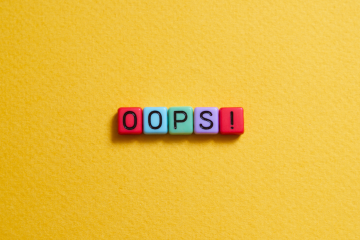When making decisions in business, marketing, or product development, intuition isn’t enough – you need data to back it up. That’s where A/B testing comes in! It’s one of the simplest and most powerful ways to compare two options and determine which one performs better.
What is A/B Testing?
A/B testing (also called split testing) is a controlled experiment where you compare two versions of something to see which one produces better results.
Example:
Imagine you’re running an online store and want to increase sales. You’re testing two different “Buy Now” button colors:
- Version A: Blue button
- Version B: Red button
Visitors are randomly shown either A or B, and you track which version leads to more purchases. If the red button results in significantly more conversions, you roll it out to everyone!
A/B testing isn’t just for websites – it’s used in product development, marketing campaigns, email subject lines, pricing strategies, and even medicine (clinical trials).
How to Design an A/B Test
A well-structured test ensures reliable results. Here’s how:
Define Your Goal
- Are you testing for clicks, conversions, engagement, or revenue?
- Make sure the goal is clear and measurable.
Randomly Assign Users
- Users should be randomly assigned to Group A (Control) or Group B (Variant) to eliminate bias.
Ensure a Long-Format Data Structure
- Instead of wide-format data (one row per variant), use long-format, where each row represents a single observation.
- This makes it easier to analyze results statistically.
Collect Enough Data
- Running a test for just a few hours won’t cut it.
- The test should run long enough to capture real user behavior (typically, at least one full business cycle).
Choose the Right Metrics
- Are you measuring click-through rate (CTR), purchase rate, or engagement time?
Key Considerations Before Running an A/B Test
Data Fluctuations & Impact
- Early results can be misleading due to random fluctuations.
- Avoid making decisions too early – wait for stable trends.
Number of Variables
- Testing one change at a time is best for clear results.
- If you test multiple changes (like button color + text), it’s called multivariate testing—which requires a much larger sample size.
Regression to the Mean
- A temporary spike or dip in results doesn’t always mean your change is responsible.
- Always look at long-term trends before making conclusions.
Effect Size: How Big is the Difference?
Even if version B performs better, is the improvement big enough to matter?
- Effect size tells you whether a difference is meaningful or just random noise.
- A tiny increase in click-through rate (e.g., 0.1%) might not justify switching to the new version.
- Use statistical tests to check if the difference is real and not due to chance.
Statistical Tests for A/B Testing
Depending on your data type, different tests are used:
t-Test (for comparing means)
- Use when: Your data is normally distributed (e.g., average time on page).
- Example: Comparing average revenue per user for both versions.
Mann-Whitney U Test (for non-parametric data)
- Use when: Data is not normally distributed.
- Example: Comparing user engagement times, which may have skewed distributions.
Chi-Squared (χ2) Test (for categorical data)
- Use when: You’re analyzing proportions between groups, such as click-through rates or conversion rates.
- Example: Testing whether ad version A or B leads to more purchases.
Fisher’s Exact Test (for small sample sizes)
- Use when: Your sample is too small for a Chi-square test.
- Example: Comparing conversion rates when only a few users have converted.
Reporting the Results
When reporting A/B test results, focus on clarity and actionability:
State the Goal Clearly
- “We tested whether a red button increases conversion rates compared to a blue button.”
Include Sample Size & Duration
- “The test ran for 4 weeks with 10,000 users in each group.”
Show Key Metrics
- “Version A had a conversion rate of 2.1
Provide Statistical Significance
- Instead of saying, “The p-value was 0.03, meaning the result is statistically significant at a 95
Recommend Action
- “We recommend rolling out the red button site-wide to maximize conversions.”
Final Thoughts: A/B Testing Done Right
A/B testing is a powerful decision-making tool, but only if done correctly. Always:
Define your goal clearly.
Randomly assign users and collect enough data.
Watch for statistical significance and effect size.
Avoid early conclusions – data fluctuations happen.
Report results clearly and honestly.


0 Comments